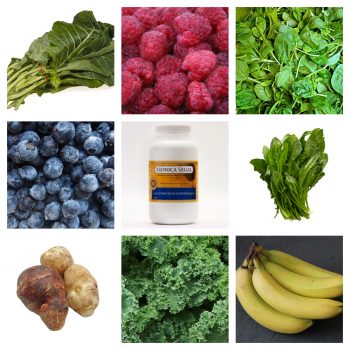The excitement about prebiotics is deserved but overdone. It’s deserved because sometime in the mid ’90s a doctor in Brussels coined the term to describe something that’s very old but wasn’t understood all that well. It’s overdone because prebiotics have been around from the start. It’s just that we didn’t have a fancy name for sugar molecules that escape digestion and so, help to feed the good-guy bacteria in the bowel.
Probiotic bacteria aka good-guy bacteria (remember that acidophilus is proven in dogs whereas others are questionable at best) helps to crowd-out nasty bacteria.
Since prebiotics help to ‘feed’ probiotics, the former is often added to supplemental probiotics to keep the bacteria thriving. Not only is this not necessary if the probiotic is freeze dried, but many dogs can’t handle some of the common prebiotics being used.
Lactulose is one example in that many dogs have diarrhea from it, but FOS (commonly added to probiotic supplements) and many others can cause the same reaction. Interestingly, chicory is a good source of FOS and while most dogs I’ve worked with can tolerate chicory itself, many simply don’t tolerate a probiotic that includes chicory as the source of FOS. It makes me wonder why that would be and I don’t have an answer, but I’m not sure it matters since chicory itself seems to work well.
We can provide properties of prebiotics easily by feeding whole grains, bananas, berries (all kinds), Jerusalem artichoke (arguably the best source), lentils, flaxseed, beans, chick peas, and all kinds of greens like kale, spinach, dandelion greens, collard greens, etc. Unless you’ re feeding a meat and bone diet without veg or grains, chances are that your dog is receiving some of the properties of prebiotics even though we don’t use that word. We just feed whole food. That said, there’s a reason that only some foods have been categorized as great sources of prebiotics. The substance must be neither hydrolysed nor absorbed in the upper part of the gastrointestinal tract. It must be selectively fermented by one or a limited number of potentially beneficial bacteria in the colon. It must preferably induce effects that are beneficial to the host health by modification of the composition of the colonic microbiota. Chicory certainly meets the criteria, which is why I’ve used it along with acidophilus, but acidophilus alone does a great job for most dogs.

